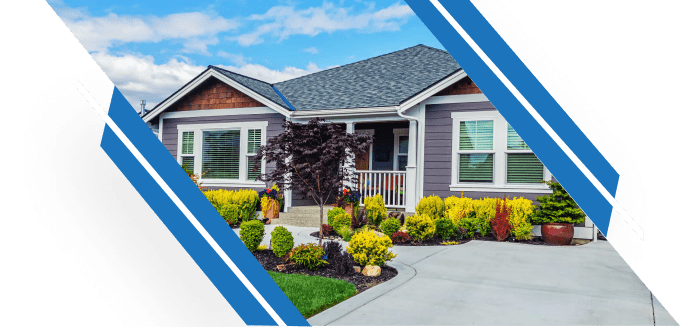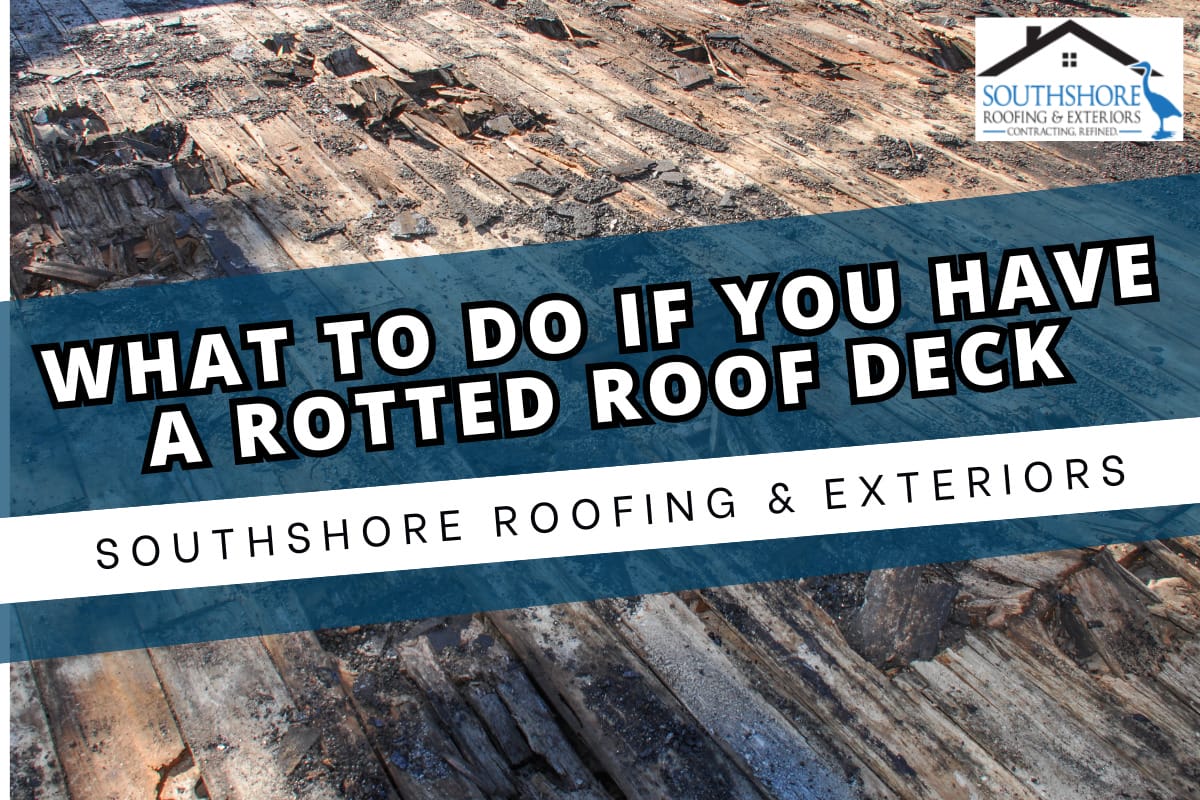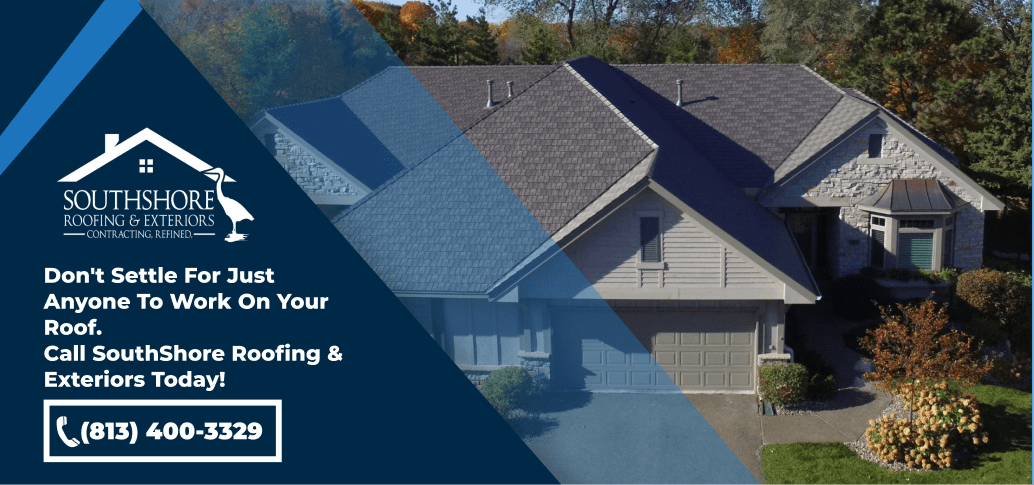Ever wondered why the condition of your roof deck is so important? The roof deck is the most important part of your roof, as it connects the roof to the structure of your home. Protecting the structure and holding the weight of the roofing shingles, it rests above the supporting rafters or trusses. It may not be visible, but it is an essential part of the framework of your house. This blog post will explain the signs of a rotten roof deck, why it’s an issue, and what you can do to fix it. It’s essential to catch this problem early on to stop further damage to your house.
Signs of Rotten Roof Deck
A sturdy roof deck is essential because it gives your roof a solid base and keeps your home standing strong. Here are some signs of a rotten roof deck:
1. Moldy or Musty Smell
A moldy or musty smell throughout your house, even when it’s not raining, can be a sign of roof rot.
2. Sagging Ceiling or Roofline
A sagging ceiling or roofline can indicate that the roof deck has been compromised.
3. Dark Water Stains
Dark water stains on the rafters or attic insulation can be a sign of water damage and roof rot.
4. Bulging or Bowing
Moisture and wood rot may cause your roof deck to sink in or swell, resulting in a bulging or bowing spot on the roof.
5. Discolored Roofing Materials
On your roof, any unusual patches or discoloration, like shingles that are black, white, yellow, gray, or brown, can indicate rotten roofing materials.
6. Roof Leaks
Roof leaks are one of the most common indicators of a rotted roof deck, which causes damage and decay to the wood beneath.
Also Read: Do’s and Dont’s Commercial Roof Leak Repair
7. Interior Damage
Look out for signs that your roof deck needs maintenance, such as wet spots on the ceiling, stains on the walls, and peeling wallpaper.
These signs can help homeowners identify potential issues with their roof deck and take timely action to address any problems.
Common Causes of a Rotten Roof Deck
Water is primarily to blame for rotten roofing materials. Since the roof deck is typically made of wood and wood composites, it is highly vulnerable to rot and other damage when it is exposed to excessive moisture.
Blocked gutters, damaged flashing around chimneys, ice dams in the winter, high humidity, heat buildup in the attic, and inadequate roof ventilation are just some of the few ways water can enter your roofing system.
Let’s take a closer look at the common causes of roof deck rot:
1. Excess Moisture
As previously mentioned, the main cause of roof deck rot is water buildup, which breaks down materials and wood. After some time, bacteria and mold begin to grow, producing acidic materials that speed up the rotting process.
2. Leaks and Condensation
When it comes to decaying roof decks, leaks and condensation are typical suspects. Look for indications of decay in areas that are prone to leaks, such as skylights, roof vents, and locations where things are anchored to the roof.
3. Poor Ventilation
Poor ventilation and inadequate fresh air flow in your attic can lead to moisture build up in the attic. Wood can begin to rot with even a small amount of moisture. This makes it essential to have adequate ventilation to prevent your roof deck from rotting.
Also Read: Common Misconceptions With Attic Ventilation
4. Damaged Roofing Materials
If your roofing materials, like shingles or metal panels, get damaged or if your gutters and downspouts are clogged, water can infiltrate into the roof deck, causing rot.
Understanding these causes can help homeowners take preventive measures to protect their roof deck and address any issues promptly.
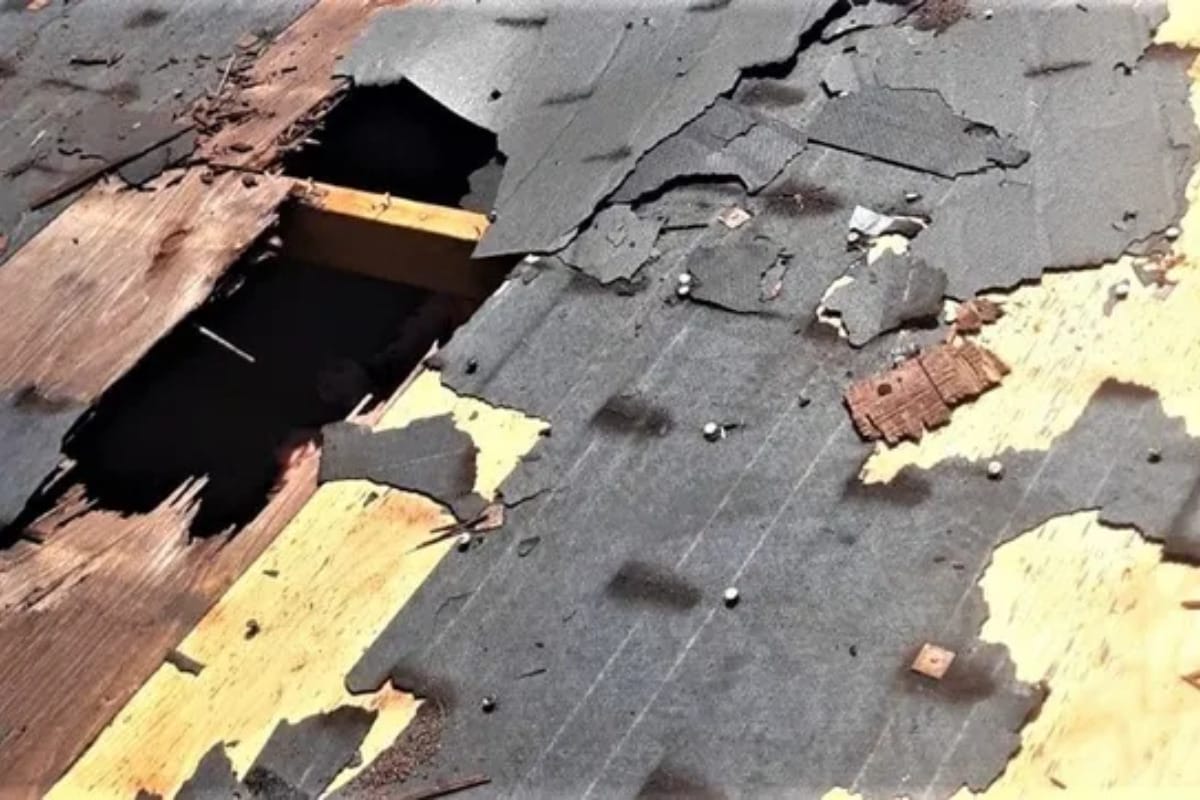
What To Do If You Find Roof Deck Rot
Don’t panic if you see signs of a rotten roof deck, but act quickly to stop further damage and protect your home. While applying roofing cement or using a tarp can help prevent additional damage, it’s best to get professional assistance for a more long term solution.
Assess the Damage
Look closely at your roof for signs of deck rot. Keep an eye out for the signs listed above, including discoloration, sagging sections, and damaged materials.
Call a Professional
If you see any damage, don’t wait! Call in a professional to inspect your roof and prevent more problems.
Remove and Replace
The only way to repair a rotted roof deck is to replace the affected sections. Check whether the roof beams also require repair and properly disposing of the decaying wood. Replace the underlayment, measure and cut the new decking board, and fix it to the roof beams.
Preventive Measures
Check your roof on a regular basis to keep it in good condition. Replace any damaged tiles or shingles, repair or replace the underlayment, and clean the surface to keep it mold and mildew-free.
Why You Should Replace Your Rotten Roof Deck
Ignoring a rotten roof deck can spell trouble for your home. It can not only damage other parts of the roofing system but also make your roof unstable. Fixing it is crucial to keep your home safe. Neglecting the issue can result in more serious problems, including structural damage, partial roof collapse, and even fire hazards.
Think of it like ignoring a small roof leak. It might seem fine initially, but over time, things can take a turn for the worse. Addressing a rotten roof deck promptly is essential to prevent broader damage to your house and maintain the stability of your roof.
Addressing Roof Deck Rot: Repair vs. Replacement
Sometimes, a rotten roof deck can be repaired, but other times, it may need to be replaced completely. Only the extent of the damage can determine whether you decide to replace or repair. Here are some points to consider:
Roof Repair:
It is possible to fix the rotten roof deck if the damage is small and limited to a small area. To do this, the damaged area must be removed and replaced with new wood.
Full Replacement:
If the damage is more significant, it’s better to replace the entire roof deck. This means taking out the old deck and replacing it.
Deciding between roof deck repair or a full replacement is crucial to keep your roof strong. If you ignore a rotten roof deck, it can get worse and interfere with the structural integrity of your home. You can ensure the long-term stability of your roof by promptly addressing the problem and taking the appropriate action.
How To Prevent Roof Deck Rot
Preventive measures can help protect your roof deck from rot and prolong its lifespan. Here are some tips to prevent roof deck rot:
Regular Cleaning
Clean your gutters and downspouts regularly to prevent moisture damage. Clogged gutters can cause water to back up onto your roof and under the shingles, leading to rot.
Proper Ventilation
Make sure your attic is adequately ventilated to avoid the buildup of excess moisture. By doing this, rot and mold growth can be avoided.
Trim Trees
To avoid damage from branches falling onto your roof, trim trees that are close to your roof. Debris can lead to pooling water and trapped moisture, leading to compromised roofing materials.
Prompt Repairs
Address any roof leaks or damage promptly to prevent water from seeping into your roof deck and causing rot.
By following these measures, you can protect your roof deck from rot and prolong its lifespan.
Conclusion
Being a homeowner means taking care of your roof deck. A healthy roof ensures a happy home. Watch out for warning signs, act quickly if you spot trouble, and don’t hesitate to call in the experts.
To wrap up, roof deck rot is a major issue that can lead to significant damage to your home. Identifying and addressing this problem promptly is crucial to prevent further harm. By following the advice in this blog post, you can maintain a healthy roof and keep your home safe and secure.
Professional Roof Inspections in Tampa, FL
If your roof is severely damaged and if you’re not sure what to do, it’s best to ask a professional for help. A can catch minor problems before they turn into major headaches. Roofing contractors, like SouthShore Roofing & Exteriors, can inspect your roof deck for any signs of rot or decay, give you an estimate, and take care of the repair or replacement of your roof deck.
You can schedule a free roof inspection today by calling us at (813) 400-3329!

